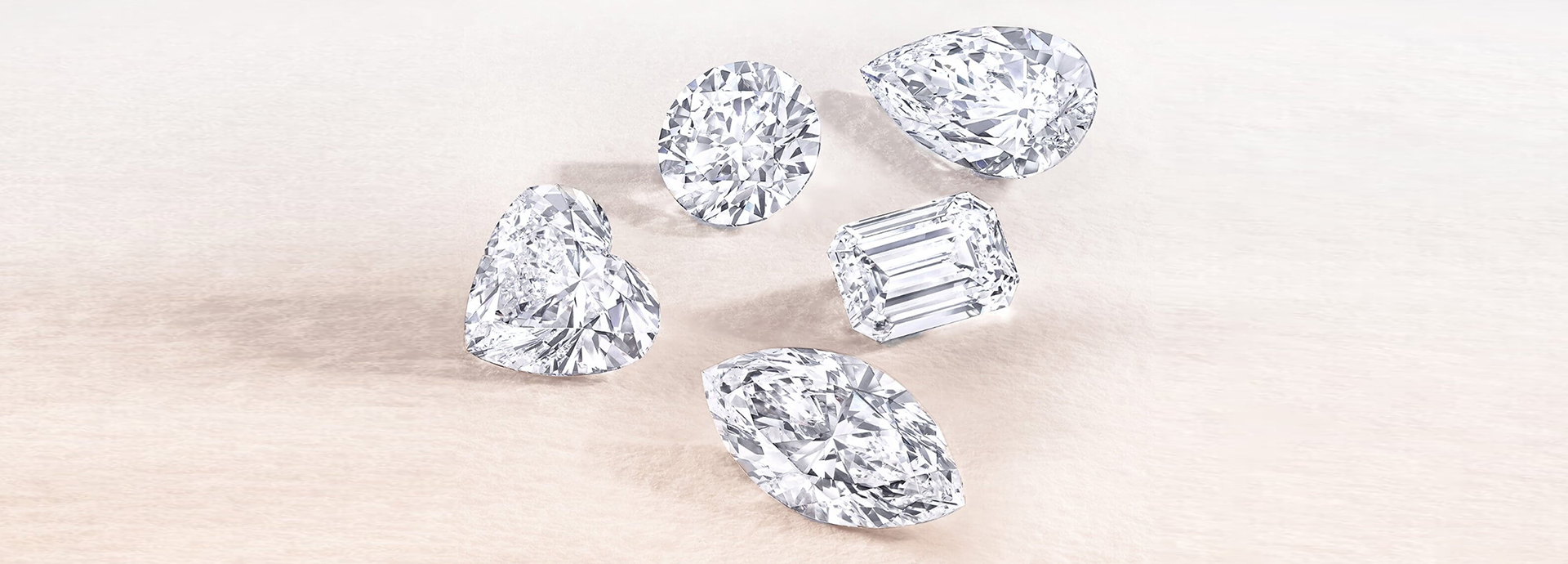
Know Your Diamonds: The 5Cs to Know Before You Buy a GIA-Certified Diamond Wholesale
Subtitle: Educate yourself about GIA certified diamonds before you buy one
A GIA Certified diamond has been graded and given an official report by the Gemological Institute of America. The GIA is a leading institute for gemology research and education. It sets the standard for grading natural and lab-grown loose diamond quality.
Although GIA is the most well-known institute for gemology; IGI, HRD, and GCAL are also reputable institutes that issue diamond certifications, grades, and reports.
Understanding the concept of the 5Cs of diamond:
Whether you are hunting for the perfect diamond for women that go with a semi-mount ring or looking to invest, loose diamonds are the way to go! Since there are so many loose diamonds to choose from, it is important to understand exactly what makes a diamond valuable and unique. The 5C’s are the characteristics every diamond enthusiast must understand before making a purchase.
But wait before you jump to the conclusion that it's a scale of measurement! It's a set of guidelines for a diamonds' quality and relative pricing. These 5Cs help you determine which diamond gives you the best value for what you’re willing to spend. So, these help you understand physical and chemical properties of the diamond jewelry that you are taking home.
The 5Cs are Carat, Cut, Color, Certification, and Clarity.
What are the 5 C’s:
Institutions such as GIA, IGI, HRD, and GCAL determine the quality of loose diamonds based on cut, color, clarity, and carat; the fifth “C” is a certification documenting the origin and features of the stone.
Understanding the concerns of customers, diamond designers have created an easy way to buy yourself a perfect diamond. Here are the 5 aspects you must know:
- Cut is the most important aspect of a diamond and denotes the stone's brilliance. The cut determines how your diamond will shine and look mounted in jewelry. The angles of the cut are responsible for reflecting light the right way.
Diamonds that have been expertly cut receive a mark of Excellent or (EX). According to GIA, “an Excellent grade diamond has high brilliance, scintillation, and an even pattern of light and dark areas.” Cut grades range from Poor (P), Fair (F), Good (G), Very Good (VG), and Excellent (EX).
- While diamonds disperse light with a rainbow effect, the Color of the diamond is the overall color of the stone. Except for fancy-color stones, diamonds appearing colorless are the most valuable. The grades range from D-Z, where D is colorless and Z is light yellow.
Most diamonds in stores have grades of D-F (colorless) or G-J (near colorless). The difference between a colorless and near-colorless stone is microscopic to most, but expert diamond dealers and cutters can usually tell the difference. Fancy color stones are graded completely differently for color, based on hue, tone, and saturation.
- Clarity refers to the level of blemishes and inclusions present in a diamond. So, if you thought diamonds were blemish-free, you’d be wrong. Every diamond has certain inclusions and blemishes—excluding some rare ones—that are unique to that stone. The ones with the least visible blemishes are considered the most valuable.
The system grades clarity based on how noticeable the inclusions are under 10x magnification. The grades include Flawless (FL), Internally Flawless (IF), Very, Very Slightly Included (VVS1 and VVS2), Very Slightly Included (VS1 and VS2), Slightly Included (SI1 and SI2), and Included (I1, I2, and I3).
- Carat is the most simple of all 4/5 C's of a diamond since the weight of the diamond is measured in carats. We may think that bigger diamonds are costly and smaller are cheap, but the price is actually determined by the demand and rarity of the diamond. Since the most famous carat weight for rings is 1 carat, it turns out to be much more expensive than one would imagine. So, what you can do instead is go with 0.9 or 0.8-carat weight instead of 1.
- If you’ve heard of the 4 C’s, you might be wondering what the 5th could be! One of the most significant aspects while buying a diamond is checking its certification. It is also known as a grading report, which contains information on the various grades and aspects of the loose diamond.
Reputable diamond sellers and jewelers will give you a certificate from trusted institutions like GIA, IGI, HRD, and GCAL when you purchase a loose diamond or jewelry piece so you can verify the quality of the diamond. If your jeweler refuses to provide certification, it's time you switch to someone more trustworthy!
Why is diamond grading so important?
We all love the shimmer of diamonds wrapped around our fingers. Especially when it's in the form of a remembrance or a token of love by a loved one. But before you go forth and buy a loose stone, you should understand how diamonds are graded and priced so you get the best value for what you would like to spend.
Please visit our virtual loose diamond showroom to compare and select the perfect loose diamond for you. Our diamond concierge service is always available to help you make your selection and answer any questions you may have about buying gia certified diamonds wholesale at Daniel William Diamonds.








